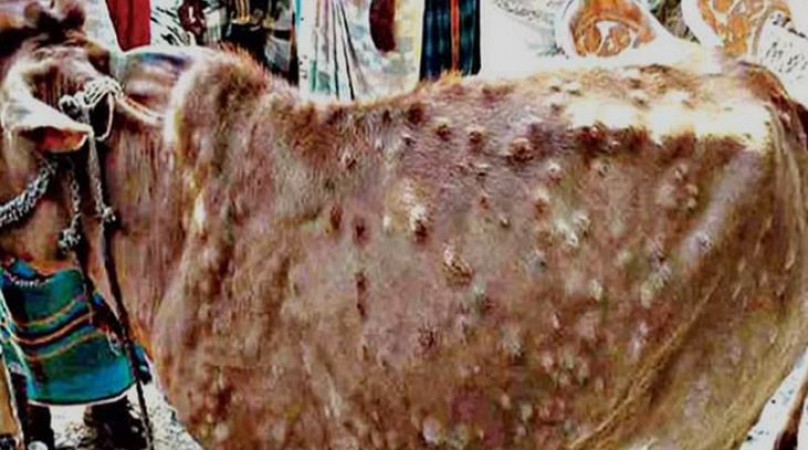
These days Lumpy Skin Disease is spreading and it has an adverse effect on cattle. Lumpy skin disease is caused by the lumpy skin disease virus (LSDV), which belongs to the genus capripoxvirus, a part of the poxviridae family (smallpox and monkeypox viruses are also a part of the same family). So far due to this disease 82,066 livestock have died till 14th September in India. In this, 53,064 animals have died mainly in Rajasthan, 17,319 in Punjab, 5,544 in Gujarat, 3,209 in Himachal Pradesh, and 2,075 in Haryana.
Is it spread to Human?
It is not a zoonotic virus, meaning the disease cannot spread to humans. It is a contagious vector-borne disease spread by vectors like mosquitoes, some biting flies, and ticks and usually affects host animals like cows and water buffaloes. The virus only infects cattle (all breeds) and water buffalo. It will not infect sheep or goats. Vaccination needs to be carried out in cow shelters and for other cattle, too to fight the virus.
How it spreads
According to the United Nations Food and Agriculture Organisation (FAO), infected animals shed the virus through oral and nasal secretions which may contaminate common feeding and water troughs. The disease can spread through direct contact with the vectors and by contaminated fodder and water. Studies have also shown that it can spread through animal semen during artificial insemination.
Symptoms
Here are the symptoms to check the health of your cattle. Infected animals start losing weight and may have fever and lesions in the mouth, along with a reduced milk yield. Affected cattle and buffalo develop a fever of up to 41.5oC and may also have watery eyes, nasal discharge and excess salivation (drooling). Within 1–2 days, raised nodules up to 50mm in diameter commonly appear around the head, neck, limbs and genitals and may cover the entire body. Scabs form on these nodules and may fall off, leaving large holes in the hide that can become infected. The legs may appear swollen and cattle may look lame or be very reluctant to move. So check the early symptoms of the virus. Minimizing the spread of the disease through early detection and reporting will reduce the devastating economic and social costs of an outbreak to livestock producers, the livestock and regional industries and the national economy.
Affected areas in India
This virus has affected a number of states and therefore the government had restricted the transportation of livestock. These states are Gujarat, Rajasthan, Punjab, Haryana, Uttar Pradesh, Uttarakhand, Madhya Pradesh, and Jammu & Kashmir (UT). There are some stray cases in Andhra Pradesh and Andaman & Nicobar Islands.
Is the virus affected the milk?
According to some studies, Joint Director at the Indian Veterinary Research Institute (IVRI) told that it is safe to consume milk from cattle infected by Lumpy Skin Disease, as it is a non-zoonotic disease. He said, "It is safe to consume milk from the infected cattle. There is no problem in the quality of milk even if you have it after boiling or without boiling."
Maheep Kapoor’s unfiltered marriage advice for Ranbir-Alia, Deepika-Ranveer, Katrina-Vicky
R Madhavan on The Oscar awards, Ab Bohot Ho Gaya we are trying to prove…
Kareena Kapoor’s grand birthday celebration with her kids and bollywood celebrities